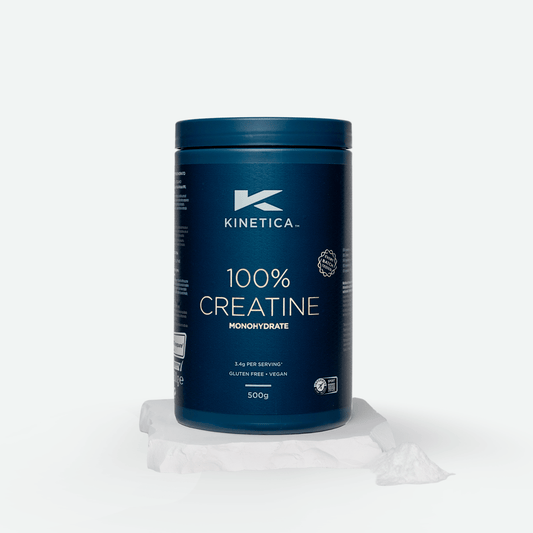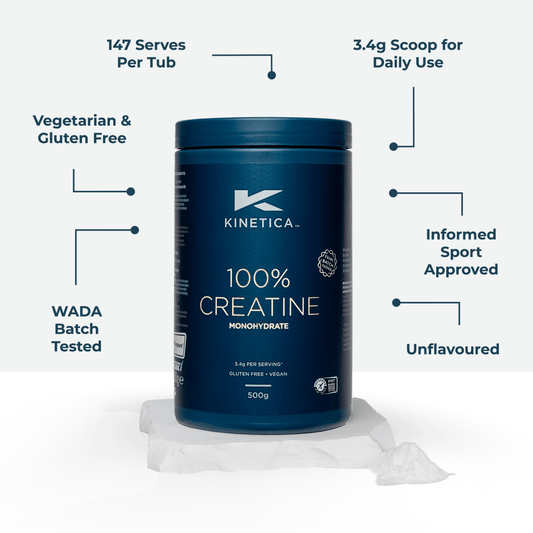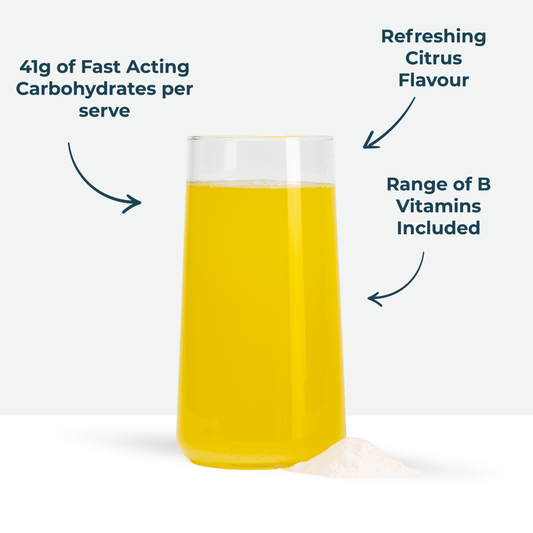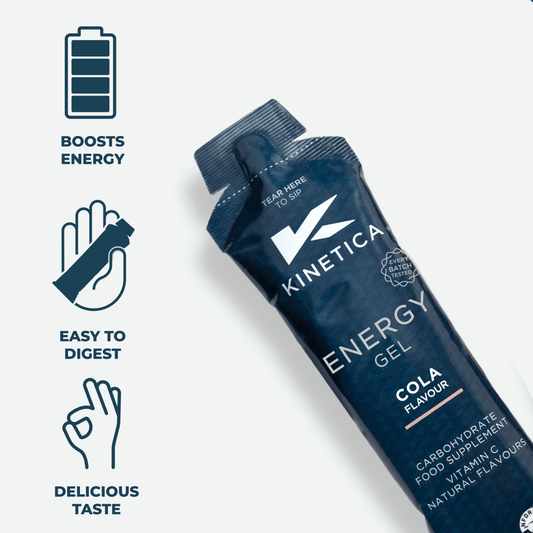Fuelling for the Gym

Fuelling your gym activity could mean anything from a standard strength or hypertrophy based session to a high-intensity CrossFit or Hyrox style workout.
As with any type of activity, it is prudent to match your energy demands with the energy you get via foods, meaning that the more activity you do and the higher the intensity of the session, the more food that you will need to consume (Thomas et al, 2016).
When increasing dietary intake to support your high intensity or longer duration activities, this should predominantly come from carbohydrate-based foods, as carbohydrates provide the fuel for higher intensity activity (Thomas et al, 2016, Maughan, 2002). Consider foods such as potatoes, pasta, rice, fruit, vegetables and cereals.
Another good template to follow in order to get a better handle on your nutrition is the 3 T’s; total, type and timing. When following any dietary pattern to improve your sports nutrition and gym performance, it will come down to total dietary intake (total calories consumed from food), type of foods (macronutrient split between protein, carbs and fats and different forms of fast or slow digesting foods) and timing of meals (how soon before or after a session should you consume your meals, snacks or shakes).

Learn more: Protein Shakes
Total dietary intake or calorie needs will depend on many factors such as activity levels, fitness goals, non-exercise activity levels throughout the day, such as work activity, and even your genetics (Thomas et al, 2016, Frankenfield et al, 2005).
For example, one person could be focusing on high-intensity gym sessions by attending a CrossFit gym several times a week, while working an active job like nursing where they are on their feet all day and clocking 20,000 steps during a long shift. Another person might have a more sedentary job where they are sitting for most of the day before heading to do a more strength-based workout that wouldn’t have such high intensity demands. Everyone’s situation is different, and roughly knowing your energy demands can help a lot with your pre- and post-gym dietary requirements.
The timing of your pre-gym meal will either depend on the serious or competitive nature surrounding your approach to training, and/or your daily schedule. Sometimes work practices dictate when someone is able to eat their last meal or snack before an exercise session. If there’s a longer window before that exercise session then you should aim for a larger meal that is slower digesting, whereas the closer you get to that training session, your snack should be lighter and easier to digest.
The American College of Sports Medicine (ACSM) guidelines suggest you should eat your last meal 1-4 hours before exercise. That is a broad range, but the example above shows when one or four hours are more appropriate and how the type of food you eat would change as the timing of your meal changes.
For example, if you had 3-4 hours before you go to the gym, you might choose a meal like a chicken stir fry with plenty of high fibre vegetables and a large portion of rice. Whereas if you’re aiming for a light snack before the gym, it may be a cereal bar, energy gels, rice cakes or an easily-digested smoothie.

The ACSM also outlines that overall daily carbohydrate intake should range between 3-12g/kg of bodyweight depending on the intensity, duration and frequency of your exercise programme (Thomas et al, 2016). According to Henselmans et al (2022), carbohydrate intakes of 4-10g/kg of bodyweight is excessive for the performance of strength-based athletes such as bodybuilders, powerlifters, and Olympic weightlifters. According to their research, there would be benefit of 15g of carbohydrate and 0.3g/kg protein 3 hours before a training session. Kinetica Sports high protein milkshakes provide 12.9g of carbohydrates and 25g of protein per bottle and would be an easy way of ticking this box if you are on the move.
If the workout contains 11 or more sets per muscle group, or if you are doing repeated training sessions using the same muscle group in the same day, then carbohydrate intake of up to 1.2g/kg per hour for the first four hours could be warranted (Thomas et al, 2016).
For example, if you are doing a lower body session in the morning and playing a team sport in the evening, it would be prudent to include two high-carbohydrate meals before returning to your usual pre-training routine.
A post-gym meal in this situation could be a large bowl of overnight oats, followed by a large serving of pasta and chicken for lunch. An afternoon snack including a peanut butter and banana bagel would help to continue that fuelling and preparation before the evening session.
Fuelling in this situation can be helped by using supplements in powder or gel form, such as Kinetica Sports Energy, Kinetica Sports Recovery and Kinetica Sports energy gels, to top up meals or snacks that fall short of those requirements.

Learn more: Recovery Powder Post Training Supplement
The International Society of Sports Nutrition (ISSN) position stand discusses how carbohydrate is the main pre-training consideration to maximise pre-training glycogen (fuel) stores and to maintain energy levels during exercise. Other studies have shown that pre-training ingestion of carbohydrates, protein and creatine can enhance performance in the gym. However, the seriousness of the programme will dictate whether or not these considerations are truly valuable for the average strength-based gym goer (Kerksick et al, 2008).
Resistance training in the gym can reduce fuel stores by 24-40%, and while higher carbohydrate diets can lead to improvements in strength-based gym programmes and performance (Mata et al, 2019, Philp et al, 2012), this isn’t limiting during a session unless higher fuel-reducing exercise is being carried out. Therefore, if you are not a higher level or very committed gym goer, you don’t need to ingest large bowls of high sugar cereal before or after an average 45-minute gym session.

It is important to note that there aren’t strict guidelines around the total amount of carbohydrates that you eat before a gym session. Instead, you should focus on hitting your total carbohydrate goal throughout the day, with a carbohydrate feeding in the hours before a gym session, consuming foods that you can digest well before exercising (Thomas et al, 2016).
When gym sessions are of longer duration, higher intensity or as part of a competition, it would be useful to consume fast digesting carbohydrates during exercise (Burke et al, 2011). This may be something as simple as a sports drink, some jellies, a Kinetica Sports Energy gel or Kinetica Sports Energy Powder.

Learn more: Energy Gels
If athletes are taking part in competitions that involve 90-minutes or more of intermittent exercise, such as Hyrox or CrossFit, there may be advantages to carbohydrate loading and maximising carbohydrate stores (Burke et al, 2011), but this can be achieved with a one-day carbohydrate loading strategy (Bussau et al, 2002).
Caffeine in doses as low as 100mg have been shown to enhance resistance training performance (Astorino & Robertson, 2010), which can be obtained by consuming a Kinetica Sports Energy + Caffeine gel or including Kinetica Sports’ Prefuel before your session. Caution should be advised when consuming caffeine due to the potential sleep disruption, particularly for those that exercise in the evening when caffeine ingestion wouldn’t be recommended. Caffeine should be consumed at least 8 hours before bedtime (Gardiner et at, 2023).
To ensure that you are adequately hydrated and full of physical and mental energy, you should consume 5-10ml of fluid per kilo of body weight in the 2-4 hours before exercise (Thomas et al, 2016). For example, an 80kg exerciser should consume 400-800ml of fluid before training to ensure adequate hydration status to aid their gym performance.
Fuelling your gym activity doesn’t need to be overly complicated. A well-balanced diet consisting of wholegrain carbohydrates, fruits and vegetables and regular protein servings will ensure you have laid the foundations for any performance.
Focusing on a pre-training meal or snack with adequate amounts of carbohydrate, a protein serving and some fluid on the side will ensure you’re fully prepared to train.
Supplements such as caffeine and creatine monohydrate can be the icing on the cake, where appropriate, but your fuelling will mainly come from carbohydrate-based food.










